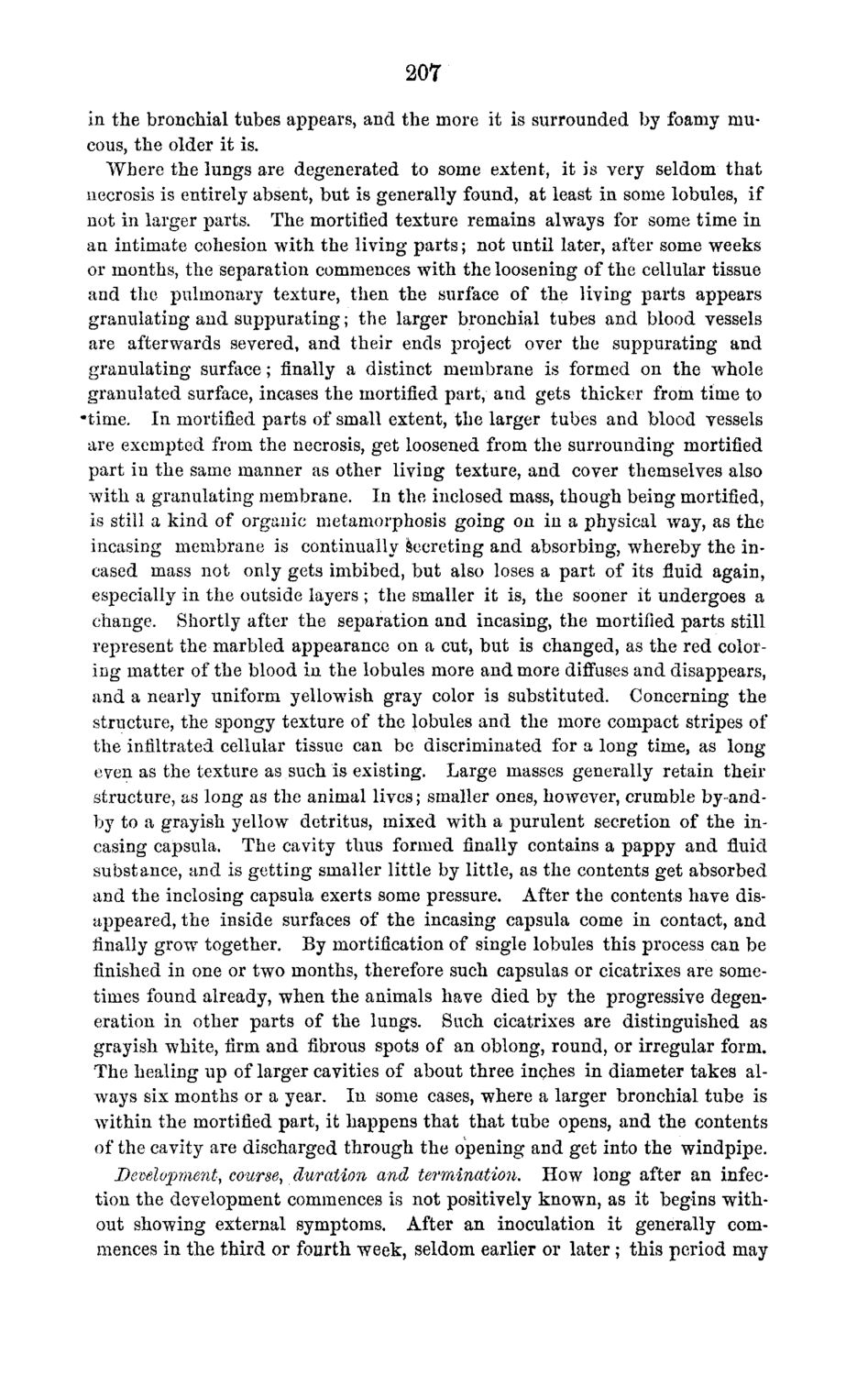| |
| |
Caption: Board of Trustees Minutes - 1870
This is a reduced-resolution page image for fast online browsing.

EXTRACTED TEXT FROM PAGE:
207 in the bronchial tubes appears, and the more it is surrounded by foamy mucous, the older it is. Where the lungs are degenerated to some extent, it is very seldom that necrosis is entirely absent, but is generally found, at least in some lobules, if not in larger parts. The mortified texture remains always for some time in an intimate cohesion with the living parts; not until later, after some weeks or months, the separation commences with the loosening of the cellular tissue and the pulmonary texture, then the surface of the living parts appears granulating and suppurating; the larger bronchial tubes and blood vessels are afterwards severed, and their ends project over the suppurating and granulating surface; finally a distinct membrane is formed on the whole granulated surface, incases the mortified part, and gets thicker from time to •time. In mortified parts of small extent, the larger tubes and blood vessels are exempted from the necrosis, get loosened from the surrounding mortified part in the same manner as other living texture, and cover themselves also with a granulating membrane. In the inclosed mass, though being mortified, is still a kind of organic metamorphosis going on in a physical way, as the incasing membrane is continually secreting and absorbing, whereby the incased mass not only gets imbibed, but also loses a part of its fluid again, especially in the outside layers ; the smaller it is, the sooner it undergoes a change. Shortly after the separation and incasing, the mortified parts still represent the marbled appearance on a cut, but is changed, as the red coloring matter of the blood in the lobules more and more diffuses and disappears, and a nearly uniform yellowish gray color is substituted. Concerning the structure, the spongy texture of the lobules and the more compact stripes of the infiltrated cellular tissue can be discriminated for a long time, as long even as the texture as such is existing. Large masses generally retain their structure, as long as the animal lives; smaller ones, however, crumble by-andby to a grayish yellow detritus, mixed with a purulent secretion of the incasing capsula. The cavity thus formed finally contains a pappy and fluid substance, and is getting smaller little by little, as the contents get absorbed and the inclosing capsula exerts some pressure. After the contents have disappeared, the inside surfaces of the incasing capsula come in contact, and finally grow together. By mortification of single lobules this process can be finished in one or twTo months, therefore such capsulas or cicatrixes are sometimes found already, when the animals have died by the progressive degeneration in other parts of the lungs. Such cicatrixes are distinguished as grayish white, firm and fibrous spots of an oblong, round, or irregular form. The healing up of larger cavities of about three inches in diameter takes always six months or a year. In some cases, where a larger bronchial, tube is within the mortified part, it happens that that tube opens, and the contents of the cavity are discharged through the opening and get into the windpipe. Development, course, duration and termination. How long after an infection the development commences is not positively known, as it begins without showing external symptoms. After an inoculation it generally commences in the third or fourth week, seldom earlier or later; this period may
| |